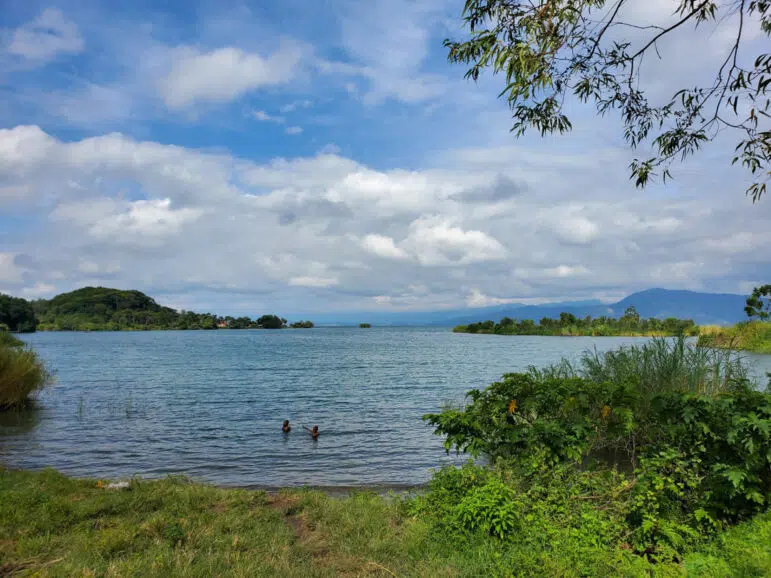A Path to Water: On an Island, Organization Becomes Protection

Island near Kalehe, South Kivu – DRC
In January 2025, the rapid advance of the M23/AFC armed group across South Kivu disrupted the region’s fragile balance. The urban centers — Kalehe, Goma, Bukavu — fell one after the other into uncertainty. State forces quickly pulled back and the front lines began shifting without warning. As usual, civilians paid the highest price, as they started to face violence, looting, forced recruitment, and endless fear and confusion.
When the fighting approached Kalehe, thousands of families fled. Some sought refuge in the forests, others tried to reach Bukavu or crossed to neighboring countries. But many people lacked alternative options and took refuge on the islands of Lake Kivu, off the coast of Kalehe. Located far from main roads and armed forces, these islands have become essential survival zones. However, these areas lack basic infrastructures, including any sources of water supply.
It was on one of these islands that a displaced community took it upon themselves to develop a simpler, yet effective approach to maintaining protection. For these civilians, this started with collectively working together to secure access to water.
The only source of drinking water is located far from the residential area. The path itself is not dangerous — but it is uncertain, like everything else surrounding these displaced communities. “You never know who you might encounter,” people would warn. To reduce this risk, the residents came together and decided to establish what they call a "community humanitarian corridor."
What does their community humanitarian corridor look like?
Each day a small group of men pick a time to walk to the water source, in which they observe and assess the safety of the route. If the situation seems calm, they return to fetch the others. Women, children, the elderly then set out for the water, accompanied by the same men. Others will voluntarily position themselves at regular intervals along the path, providing a form of protective presence until everyone has returned safely.
Their system is neither formal nor regulated. It is based on mutual listening, trust, and commitment to not expose their most at-risk community members to harm. It was born from silent consensus, from a community’s shared learnings during a crisis.
A similar approach has been woven into other routines. Back in Kalehe, women no longer go to the market alone. They leave in small groups, accompanied by two or three men from their families or close circles. The simple, visible presence of the men helps prevent harassment and intimidation. Here, protection takes shape within households and communities.
These daily practices reflect a intuitive understanding of what Unarmed Civilian Protection is all about: looking out for one another, staying alert to threats, and using unarmed physical presence to prevent harm.
Despite the effectiveness of their efforts, communities do face limitations. Without early warning tools, they're unable to coordinate larger response systems. And without formal training, the most vulnerable (particularly women, unaccompanied minors, and those with disabilities) are less prepared to address new risks.
These communities aren’t asking for anyone to step in and take over— they’ve already shown they know how to lead and organize. What they need is support to make their efforts stronger and more sustainable.
This is where Unarmed Civilian Protection can play a major role, as it offers tools for risk analysis and ensures community voices are seen and heard in humanitarian spaces. Most of all, UCP can provide long-term support so that these community-led efforts will continue to grow into resilient, replicable, self-sustaining forms of community protection that are capable of adapting in case of new waves of uncertainty.
Despite the unknown of what lies ahead, communities across the DRC are working together to shape what protection looks like on their own terms.
